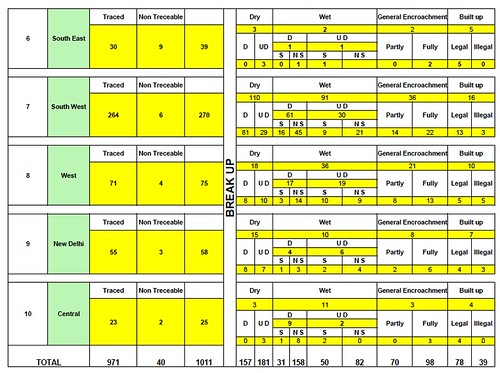By Afroz Alam Sahil, Twocircles.net
At a time when India’s rural heartlands reel under severe drought, the condition of water bodies across the country doesn’t paint a rosy picture either. India’s capital too isn’t a stranger to this problem. Every single day, Delhi uses over 300 crore litres of water to quench its thirst, but still falls short by about 100 crore litres. In fact, issues of water shortage in and around Delhi has increased drastically over the years.
Given the situation in New Delhi and the sharp decline in water levels across the capital, the state government is trying to use satellite imaging with the help of Google to map its water bodies. However, as is often the case, such efforts are being completely dwarfed by the government’s complete inability to maintain, or even protect its existing water bodies. Documents provided under an RTI show that a sizeable number of Delhi’s river beds, ponds and lakes have either completely disappeared or have been encroached upon.
The RTI, which is based on information provided from different state government agencies, reveal that encroachment is the biggest threat to Delhi’s water bodies. From residential complexes to graveyards, all have come up at the cost of these water bodies. It is important to point out that private encroachment is not the only threat to these bodies; in certain cases, the government too has comfortably taken over these bodies and constructed a range of projects: Bus terminals, stadiums and schools to other on this land.
In Joharpuri, for example, the two water bodies in the area were taken over by a cremation ground. Similarly, in Mustafabad, the water body that existed in the area now has a graveyard and an Eidgah in its place. Again, in Babarpur, the water body has now been replaced by a cremation ground.
The situation is similar in Karawal Nagar too. Private encroachment has taken over one of the water bodies, while the other has been leased out for 99 years to the Delhi Transport Corporation to build a bus terminal. In Gokulpur, the water body has been encroached over by 22 households. All these households are part of an unauthorised colony which is in process of being regularised.
Government agencies too, it turns out, have been involved in encroachment. One such example is in Kalkaji tehsil’s village Johar Tughlakabad, where DDA is the culprit. Another village in Delhi, Bankner, has a stadium on a dried up water body. The situation is worse in Sultanpur, where five water bodies have dried out completely and have been allotted to a government school.
In Fatehpur Beri village, where 70% of the water body has dried, RTI reveals that a temple has encroached 40% of the area. Similar cases are present in Dera Mandi and Maidangadhi locality. A water body spread across 78 bigha in Chhattarpur area has been issued to a temple, while another one in same area was taken over by a Jain temple.


The interesting, yet worrying trend here is that is it is not as if the Delhi government is unaware of these activities: the state records, according to the RTI, show that 971 water bodies are registered in the state and while 40 more haven’t been traced yet. However, among the registered water bodies, 168 have been encroached upon; illegal construction has taken place on 39 and on 78 water bodies, illegal construction has been done by the state government no less. To sum up, of the 1011 water bodies, 285 have disappeared off the map while 338 have dried up completely.
Perhaps if these water bodies – that have either vanished or are in process – were taken care of, Delhi wouldn’t have been amidst the top 20 cities across the globe that deals with the water crisis.

